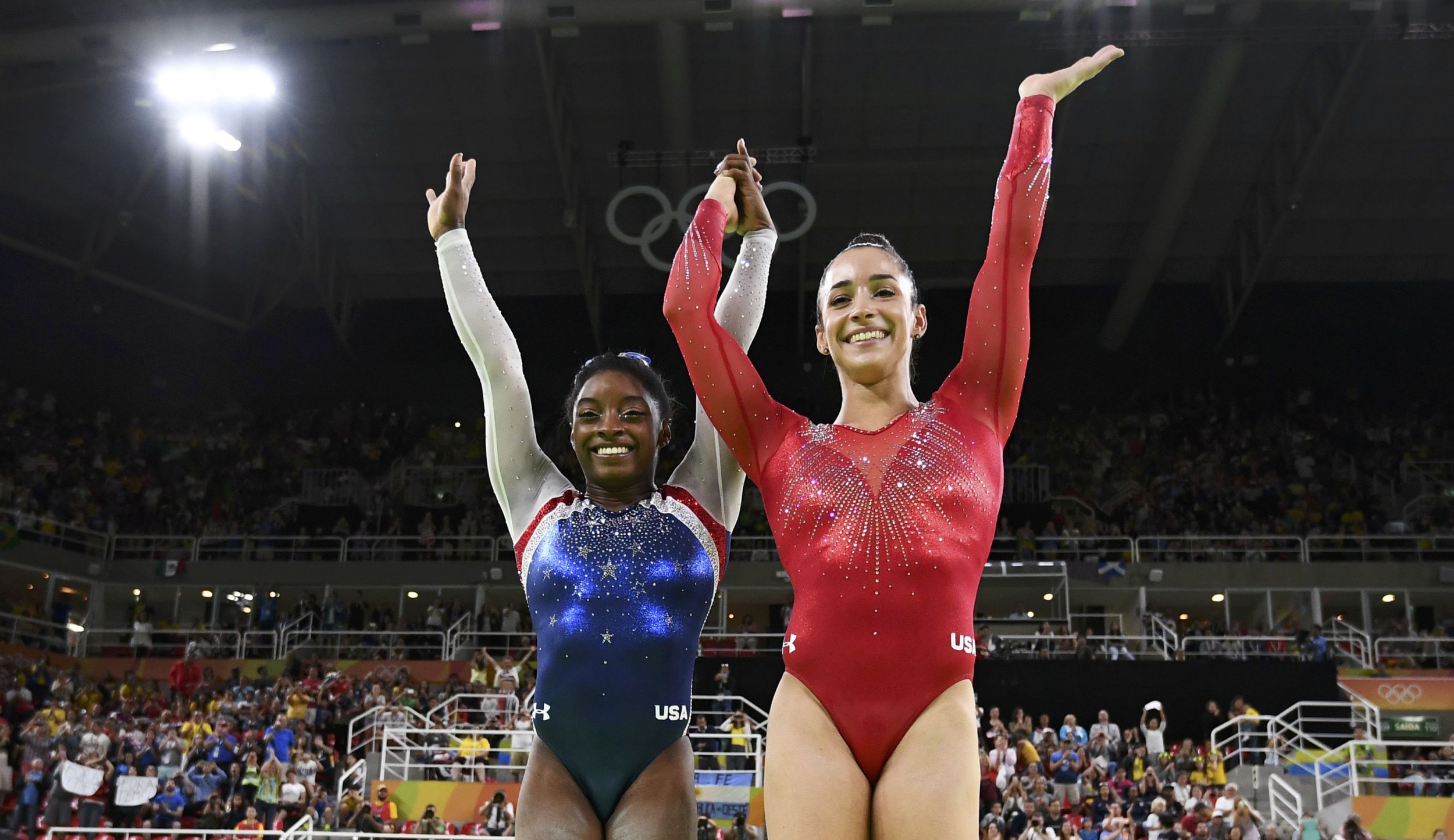
This article originally appeared on Medical Daily.
Watching the 2016 Olympic women's gymnastics team and you saw that nearly all the athletes are incredibly petite and small. Simone Biles stands at 4 feet 9 inches, and her teammates don't tower over her by much. However, as science shows, when it comes to tumbling through the air, great things do come in small packages.
Women's gymnastics is very much a chicken/egg situation. Are these women small because years of intense training has stunted their growth, or are they able to succeed in the sport because they are naturally destined to grow no larger than a child? A 2004 study that attempted to answer this question found that female gymnasts' bone age was on average two years behind their actual age. However, the researchers could not determine that it was the actual training that led to a world of tiny women in competitive gymnastics. It could simply be that the smaller you are and the later you enter puberty, the more likely you are to stay in the sport long enough to achieve greatness.
The reason that small girls excel in this sport can be pinned down to pure physics. For example, smaller girls need less energy to propel themselves into the air, making short girls flip faster than their taller counterparts, iNews reported. Laurie Hernandez at 5 feet even is certainly a sight to behold as she somersaults through the air. In addition, short legs also give athletes more room to run and jump on the balance beam, and small arms make it easier for Madison Kocian, 5 feet 2 inches, to swing on the uneven bars.
Although Olympic gymnasts are incredibly strong and muscular, having a smaller frame means you need less muscle to move your body. Having less muscle makes you lighter and ultimately, being lighter makes it easier to soar through the air.
But what about their age? Surely, a small 20-something woman can move as well as a girl of the same size, 10 years her junior. Yet, it's not often that you see an Olympic female gymnast who is out of her teenage years. In team U.S., Aly Raisman, 22, is the only teammate old enough to even drink alcohol (not that elite gymnasts do all that much drinking). According to John Geddert, head coach of the 2012 U.S. women's Olympic team, this may be because the sport is simply too strenuous for the body to handle for too long. This is why it's extra impressive that it's Gabby Douglas' second time competing for team U.S.A at only 20 years of age.
"With their body changes and the wear-and-tear everybody goes through, once they [female gymnasts] become women, it just becomes very, very difficult," explained Geddert, as reported by The Washington Post.
In addition, most of these girls learned their skills with a young pre-pubescent body, and as their bodies change it becomes difficult for them to maneuver in the same manner, with American gymnastics coach Brian Powell once calling the sport an "uphill battle against the developing body," iNews reported.
Uncommon Knowledge
Newsweek is committed to challenging conventional wisdom and finding connections in the search for common ground.
Newsweek is committed to challenging conventional wisdom and finding connections in the search for common ground.
About the writer
To read how Newsweek uses AI as a newsroom tool, Click here.








